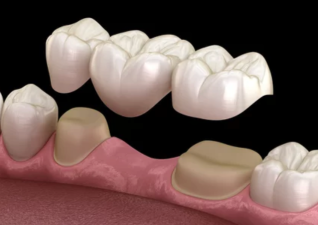Is it better to have dental implants or dental bridges? Because these are two different ways to repair missing teeth, each has its own advantages. When choosing, we should make decisions based on the condition of our missing teeth, the condition of the adjacent teeth and the teeth of the opposing jaws, the condition of the occlusion, the condition of our alveolar bones, and our expectations and hopes for the restoration of missing teeth.


Is it better to have dental implants or dental bridges? Because these are two different ways to repair missing teeth, each has its own advantages. When choosing, we should make decisions based on the condition of our missing teeth, the condition of the adjacent teeth and the teeth of the opposing jaws, the condition of the occlusion, the condition of our alveolar bones, and our expectations and hopes for the restoration of missing teeth.
[Dental implants]

Dental implants are a new type of denture technology that does not require grinding of both teeth. It drills holes in the alveolar bones above the missing teeth, inserts pure titanium nails, and then bakes/all-ceramic teeth on them after healing.
For full-mouth/half-mouth dental implants, it is not the number of missing teeth that is needed to make as many dental implants as there are teeth. Using the all-on-4/6 immediate load-bearing dental implant method, only 4/6 implants are needed to restore the chewing ability of half-mouth/full-mouth teeth.
[Bridges]

The so-called bridges are what we call fixed dentures. Our grandparents or the older generation all have these kinds of teeth. Occasionally, you can see them taking teeth out of their mouths!
Moreover, fixed dentures, i.e. baked/all-ceramic teeth, require grinding down the two adjacent teeth, making porcelain crowns, and using a bridge between the two teeth to restore the appearance and function of our teeth. It can achieve good aesthetic and functional restoration effects, but it will damage the health of the two adjacent teeth, and such damage is irreversible, which means that if one tooth is missing, three bridges will be made in a row, and the price paid is three teeth.
For porcelain bridges, we don’t have to worry too much about the condition of the alveolar bone below, and for the restoration of dental implants, we directly implant artificial roots in the alveolar bone of the toothless area, and perform porcelain tooth restoration after the artificial roots heal. This requires that our local jawbone must be healthy, and the height and width of the bone volume must be appropriate.
- Dental implants are healthier and do not affect adjacent teeth. Bridges need to grind off adjacent healthy teeth, causing damage to adjacent teeth.
- Dental implants are more beautiful, and poor fit of the bridge edges will lead to tooth caries and damage.
- Dental implants are more comfortable than bridges.
- Dental implants are more secure than bridges.
- The first dental implant has served for more than 50 years, while the bridge is generally 5-8 years.
- The chewing function of dental implants is comparable to that of real teeth, while the chewing function of bridges is only about 60%.
If the local bone volume of dental implants is not suitable, bone grafting or some complex operations may be required. Relatively speaking, the treatment cycle is relatively long, requiring 3-6 months.


_20241106154012A037.jpg)